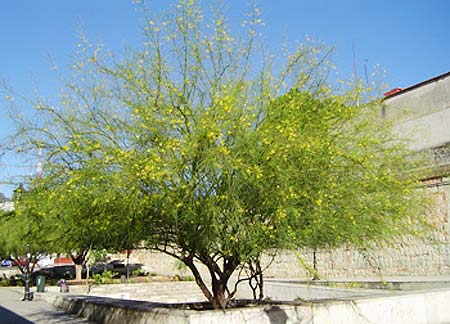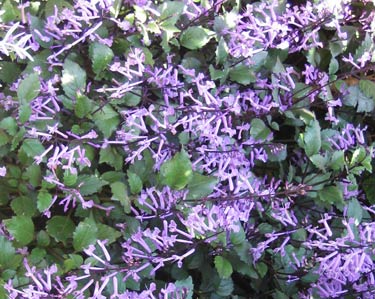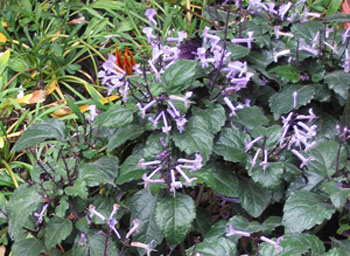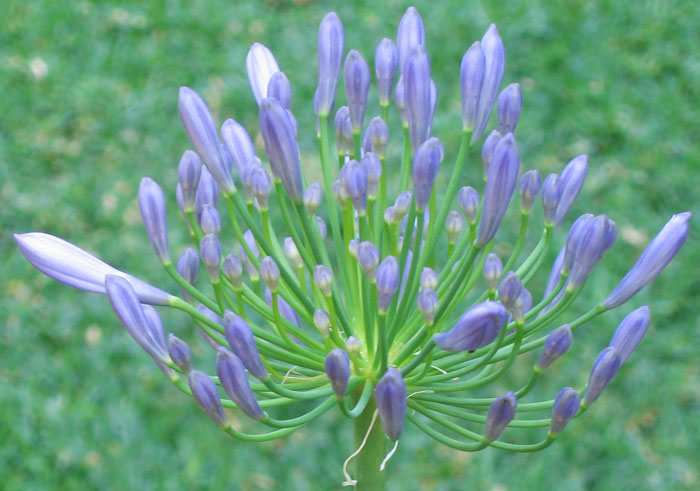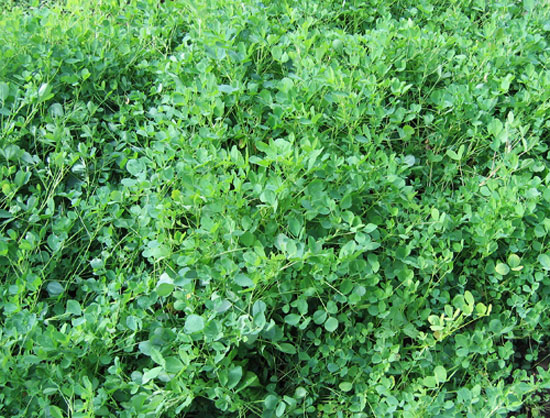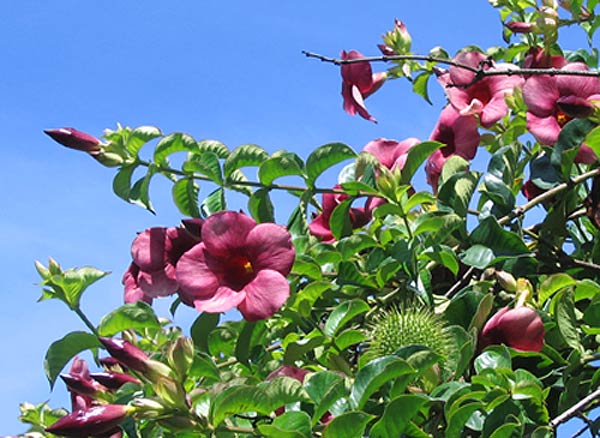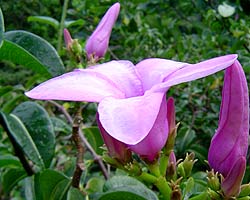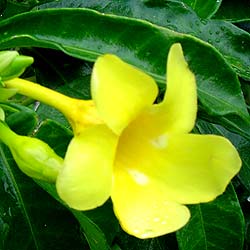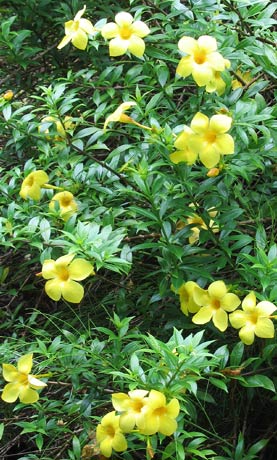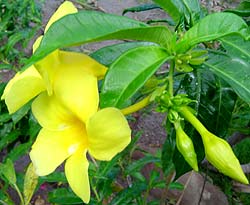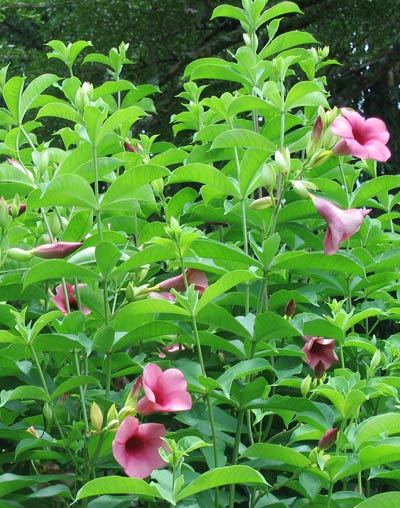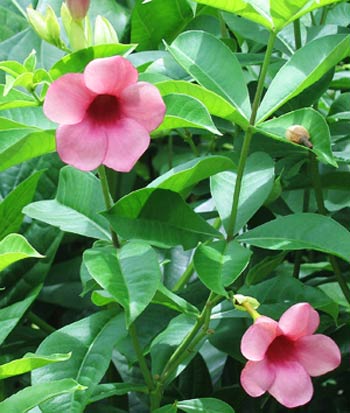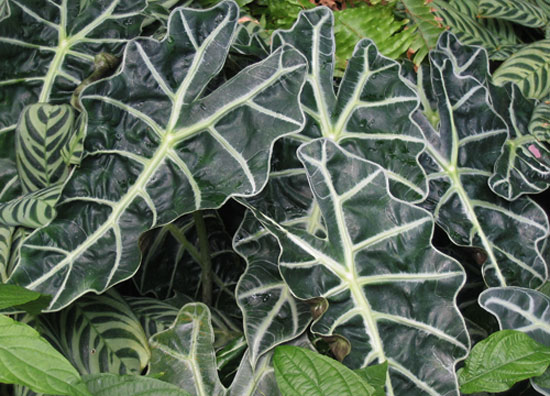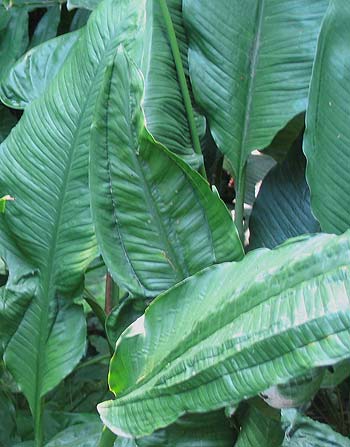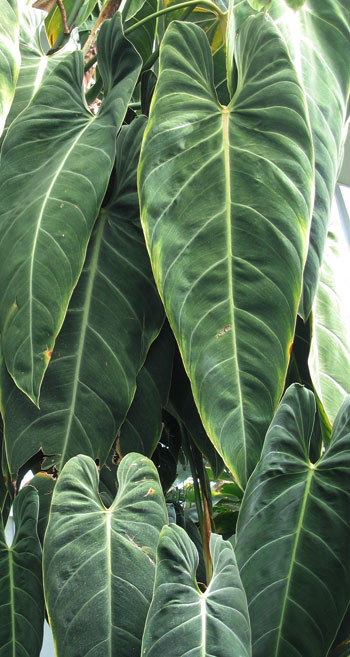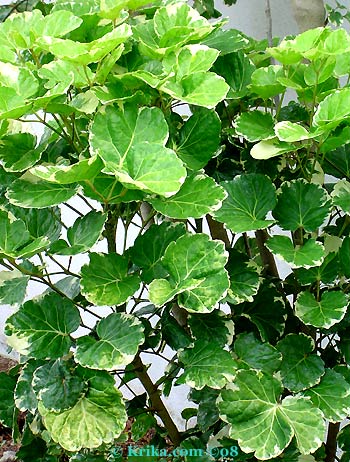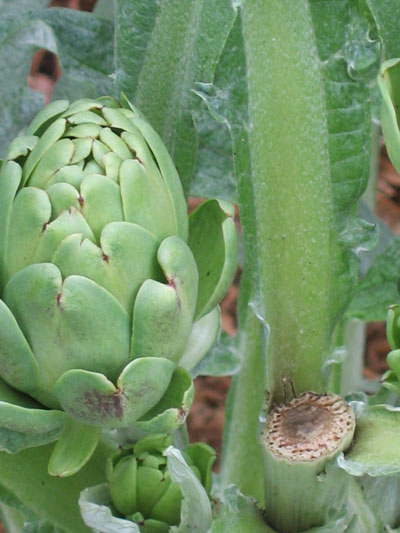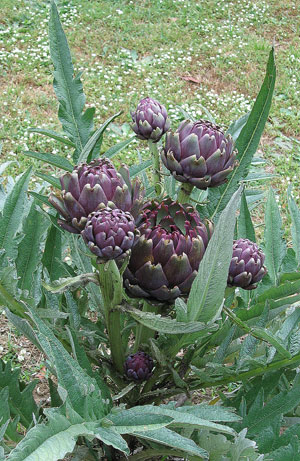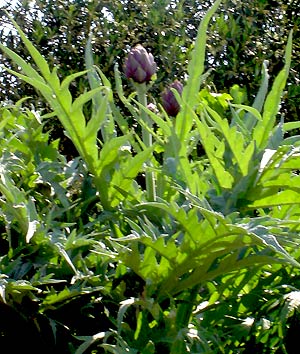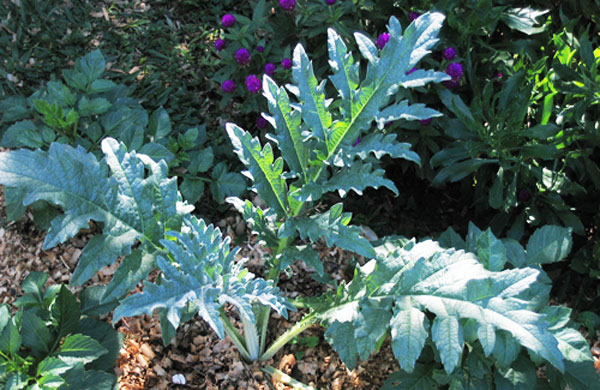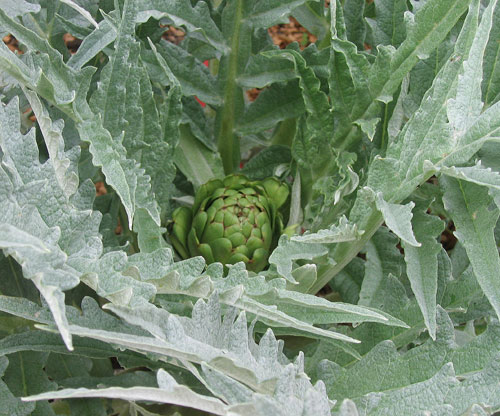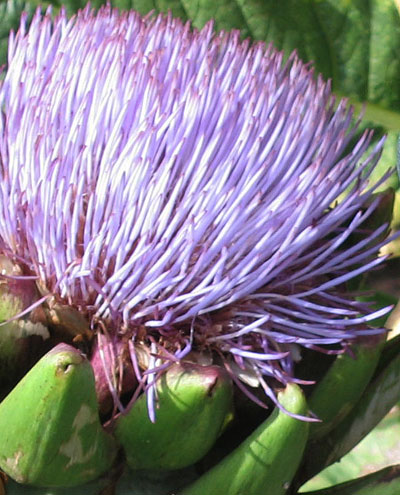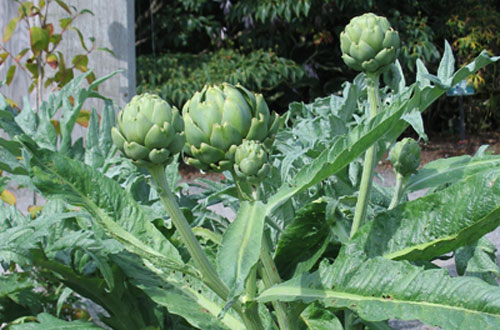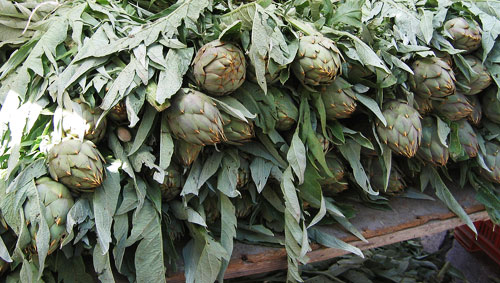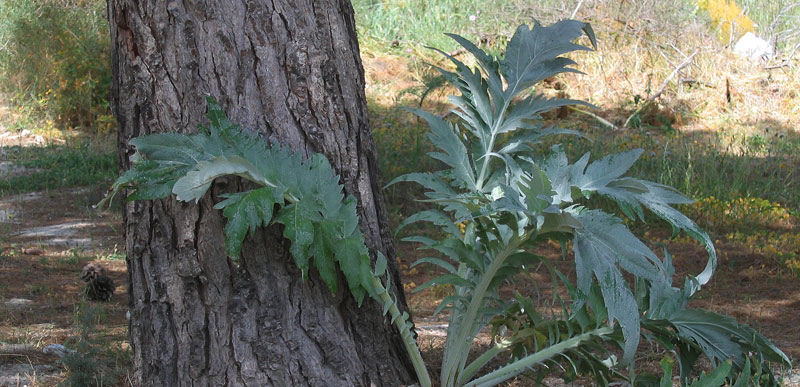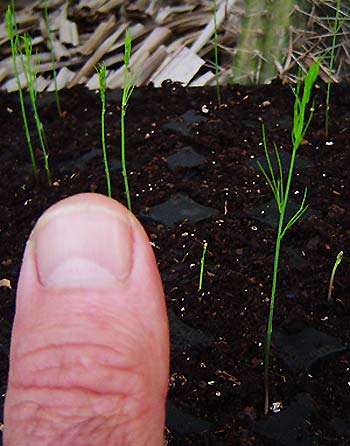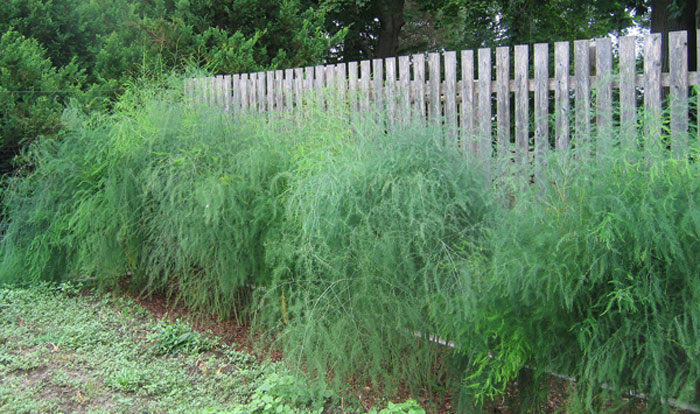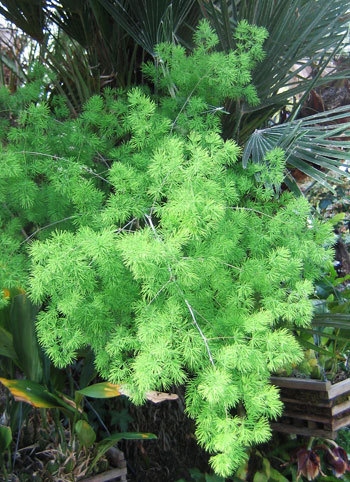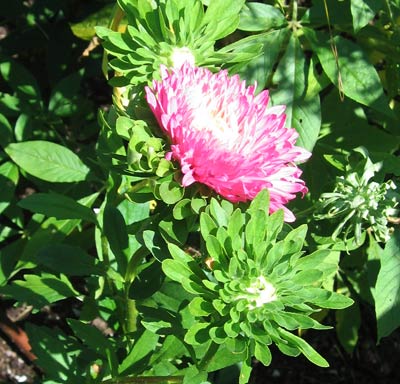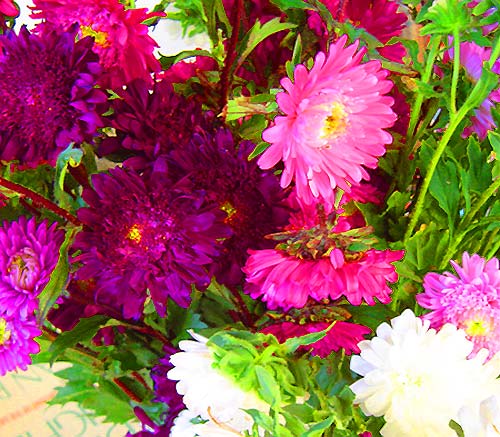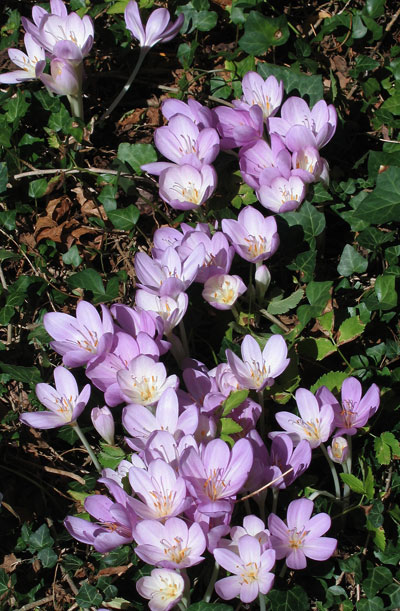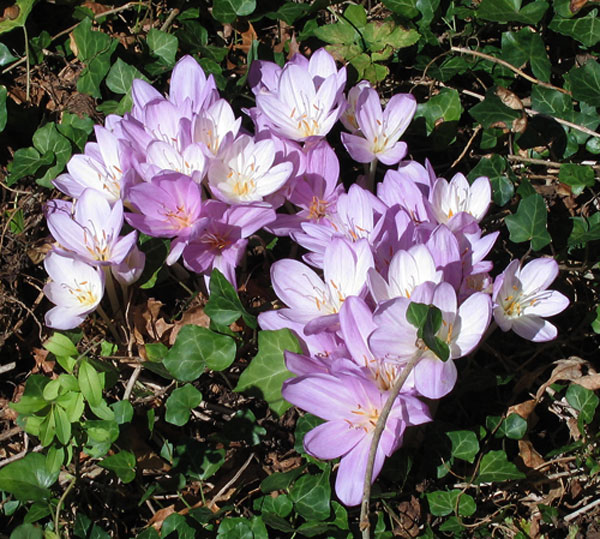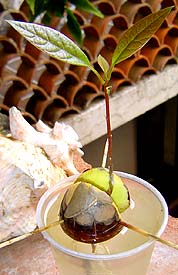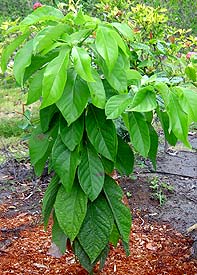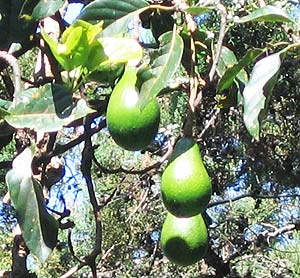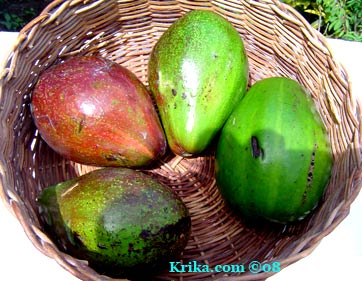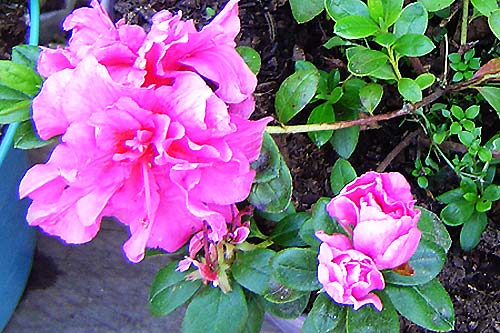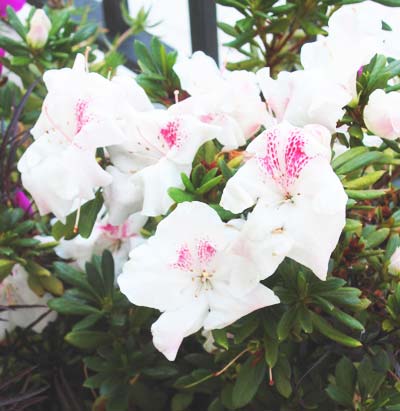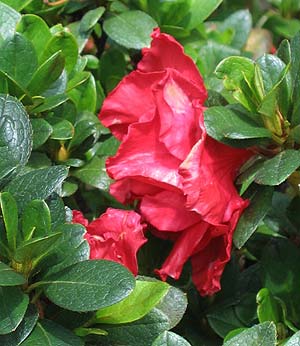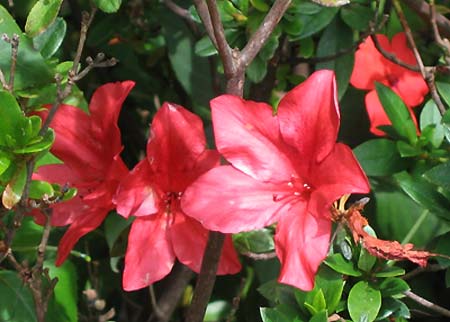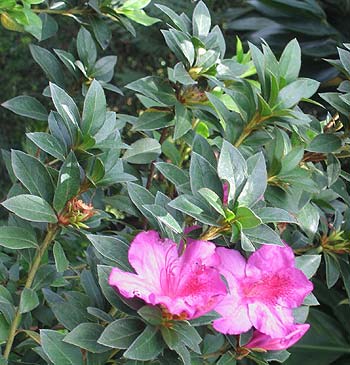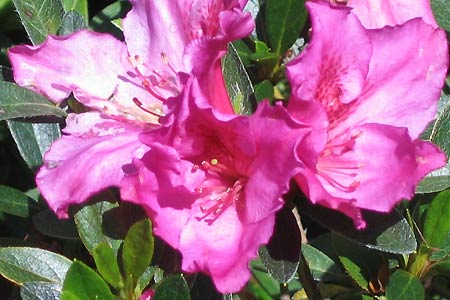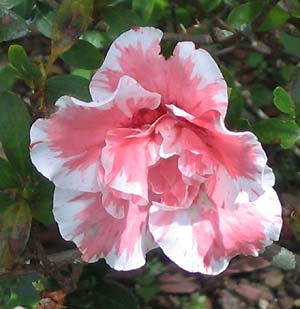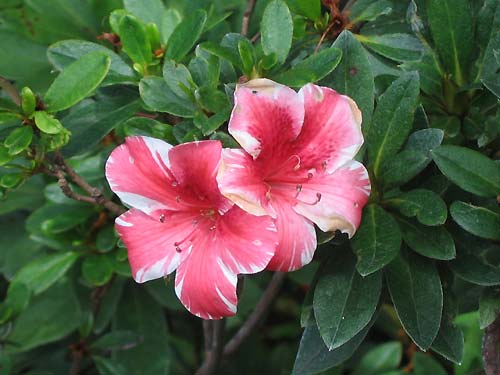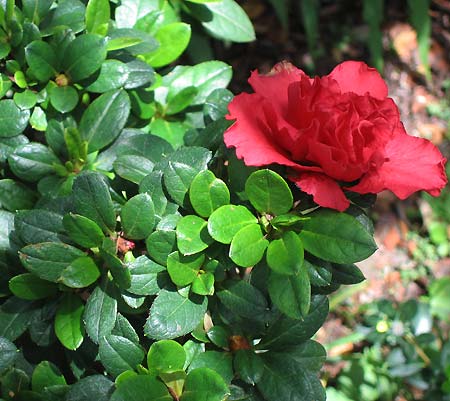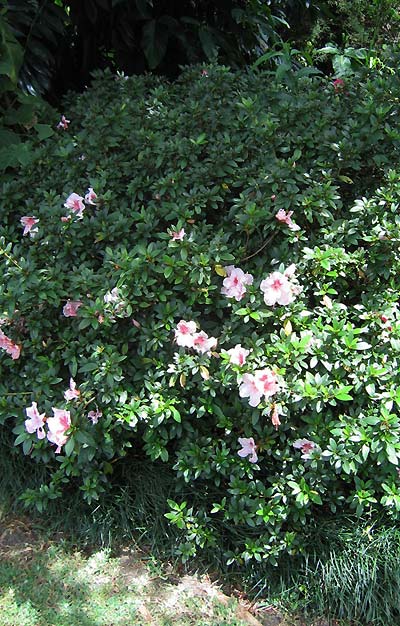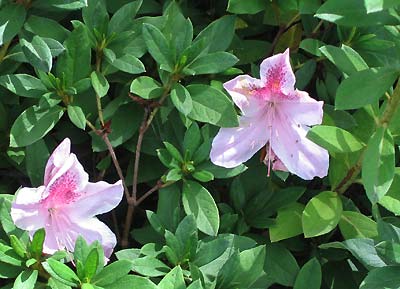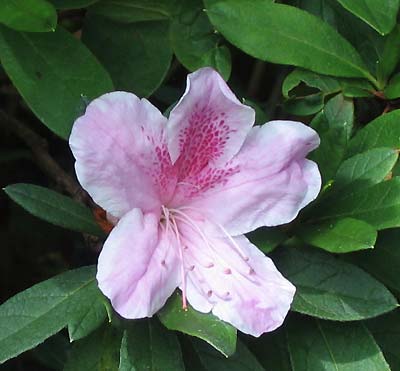| GreenGardeningCookingCuring.com | A
PAGE |
| HOME |
If you like this site and would like to help us create a GreenGardeningCookingCuring.com site for Mobile users we thank you for your support. |
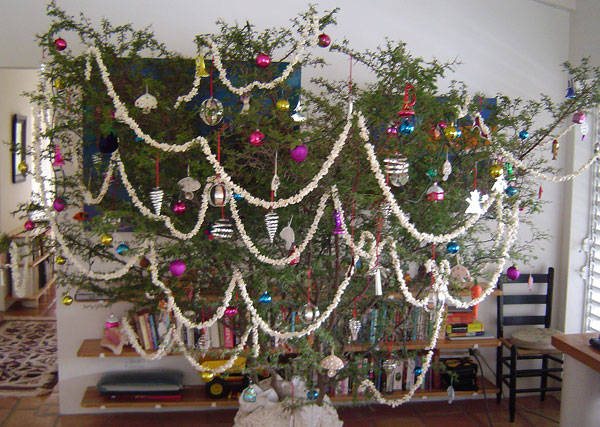 |
| Acanthus See the "B" Page BEAR'S BREACH | ||||
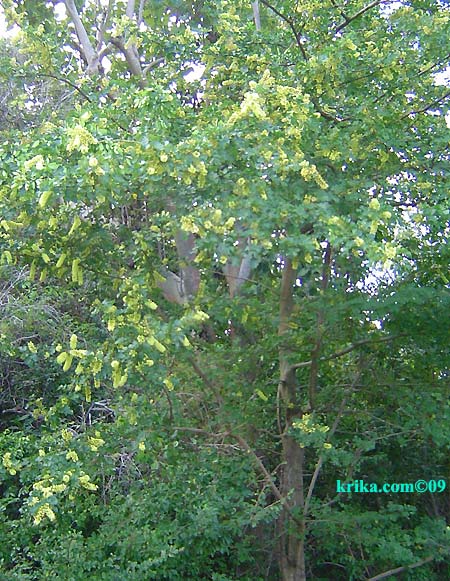 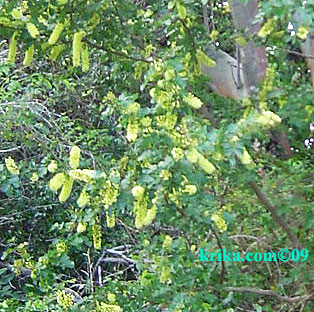 Acacia
Tree, Wattle, Whistling Thorn, Thorn Tree Acacia Acacia
Tree, Wattle, Whistling Thorn, Thorn Tree AcaciaBenefits: Acacias tend to have very deep roots which work well to retard erosion. They also have a range of medicinal uses still in practice today. We used acacias as Christmas trees while living in Montserrat. From: Primarily tropical and subtropical regions of Australia and Africa Photographed: In Woodlands, Montserrat. Planting and Care: Full sun is the only requirement for growing acacias. They are very tolerant of soil types and droughts. Text and Photographs ©Krika.com 2009/2010 and ©GreenGardeningCookingCuring.com 2018 |
||||
Photographed: In the city of Oaxaca, Mexico, in the fall of 2009. This yellow flowering small tree is very tough, growing in a climate that is almost completely dry for about 8 months a year and normally very rainy for the other 4 months. Temperatures also vary from cold, but never freezing, to very hot. The two hottest months, April and May, also coincide with the driest period of the year.
|
||||
Acacia
Christmas Tree -- Merry 'Cushamas'
|
||||
| **Adenium See The "D" Page DESERT ROSE | ||||
|
||||
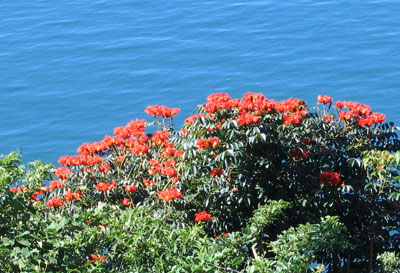 African
Tulip Tree, Scarlet Bell Tree, Fountain Tree Spathodea
campanulata African
Tulip Tree, Scarlet Bell Tree, Fountain Tree Spathodea
campanulataThis small tree makes up for its lack of size with its not infrequent display of orange red flowers. It is marvelous in bloom and pretty when it's not. Benefits: It is a tree often used to provide shade on coffee plantations and it is said to have many medicinal uses as well. From: Africa Photographed: To the right looking down from a road by Lake Atitlan in Guatemala and below at the Hotel Magdelena in Tobago in 2018. Planting and Care: Plant this lovely tree in full sun and though it will tolerate poor conditions, give it the best you can and it will do the same for you. Try to plant it in a place out of strong winds. Text & Photographs ©GreenGardeningCookingCuring 2018 |
||||
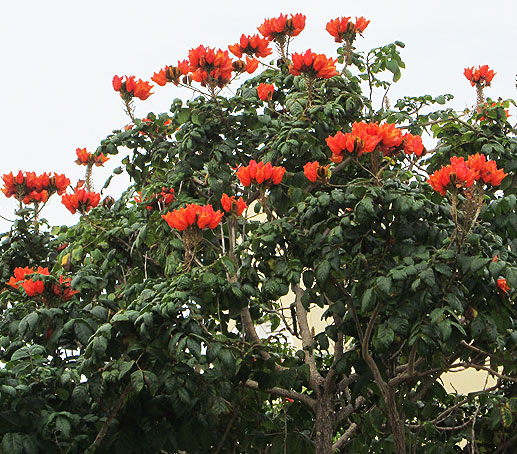 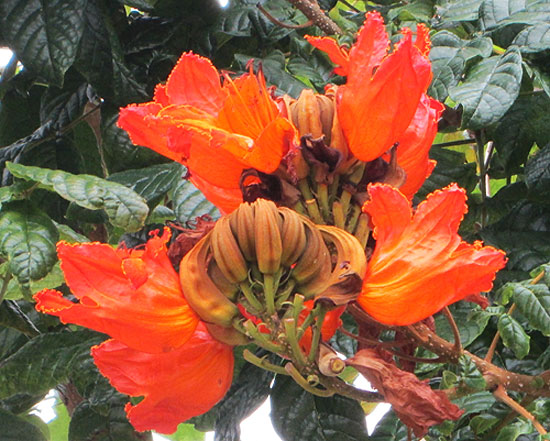 |
||||
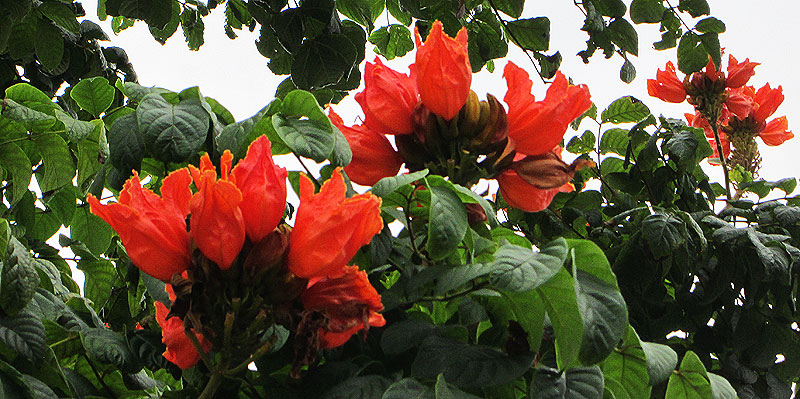 |
||||
 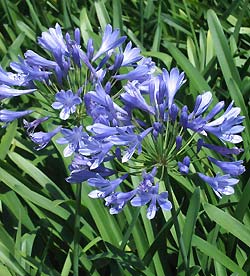 **Agapanthus,
Blue Lily of the Nile Agapanthus
africanus or Agapanthus praecox **Agapanthus,
Blue Lily of the Nile Agapanthus
africanus or Agapanthus praecoxAgapanthus is another of my very favorite flowers. In Mexico they are available in the flower markets for a few months every year and a dozen stems of this purple or white flowering bulb (tuber) costs under five US dollars. We bought bulbs in the Taxco flower market last year and planted them when we got back to Montserrat. In the photo to the left you can see them getting started. From: Southern Africa Photographed: The left photograph was taken at our former home in Montserrat and the bloom to the right was taken at the Hotel Atitlan Botanical Garden on Lake Atitlan in Guatemala in May of 2010. Planting and Care: Each bulb (tuber) will produce a plant about twenty inches tall and about twenty inches wide so don't underestimate its need for space. Plant them in full sun or in a hot climate in a semi shady area for best results and give them a rich moist soil. Link: somethingforthegarden.co.uk/agapanthus.htm Text and Photographs ©KO 2008/2010 and ©GreenGardeningCookingCuring.com 2018 |
||||
Photographed: In our garden at our home at Lake Atitlan in Guatemala in 2014.
|
||||
**Ajuga
Burgundy Glow, Carpet Bugleweed Ajuga
reptans |
||||
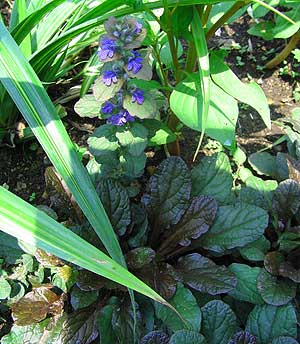 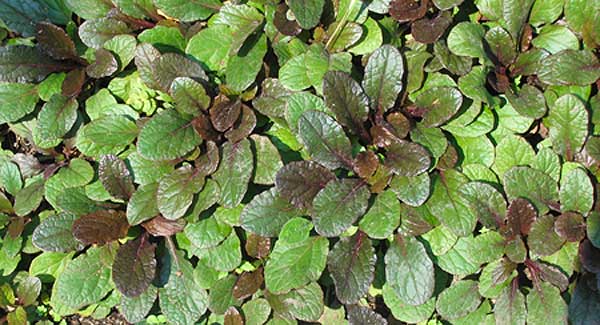 Photographed: At
the Hotel Atitlan Botanical Garden on Lake Atitlan in Guatemala
in May of 2010. Photographed: At
the Hotel Atitlan Botanical Garden on Lake Atitlan in Guatemala
in May of 2010. |
||||
GMO
ALERT: The
companies doing genetic modifications got a hold of alfalfa early
on in their work and were not
cautious about the effect of the changes they
were making. As a consequence, in the United States there is
no
longer any
alfalfa that can be considered organically grown. Probably
all of it is contaminated with the modified genes of industry's
new creation.
Because of this, Japan ceased importing alfalfa from the United
States. If you don't mind eating GMO food, look for a better
source of seeds than those sold at Whole Foods. Their seeds
do not sprout properly which means they rot in the sprouting
jars and ruin those seeds that were viable. If you care about
eating GMO free foods, try to find a shop importing seeds from
Europe or better yet from Japan. |
||||
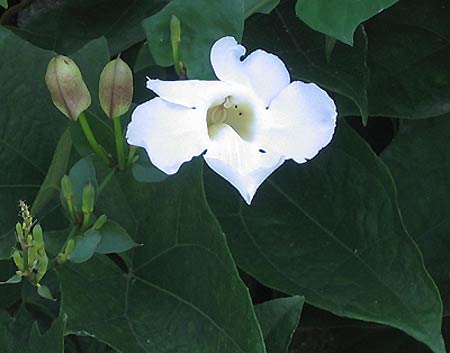 Allamanda
Blanca (White) Allamanda x Alba (Blanca) Allamanda
Blanca (White) Allamanda x Alba (Blanca)Benefits: As a group Allamandas have some remarkable medicinal applications in treating relatively serious diseases, including cancer. From: Mexico to Argentina Photographed: At the Hotel Atitlan Botanical Garden on Lake Atitlan in Guatemala in May of 2010. Planting and Care: Plant this allamanda in full sun and don't worry to much about moisture unless you are in a very dry environment. Give the plants fertilizer now and then. This is another of my favorite plants in the garden, not only for its lush flowers, but for its easy going nature. Text and Photograph ©Krika.com 2009 and ©GreenGardeningCookingCuring.com 2018 |
||||
**Brown
Bud Allamanda Allamanda cathartica 'Hendersoni' |
||||
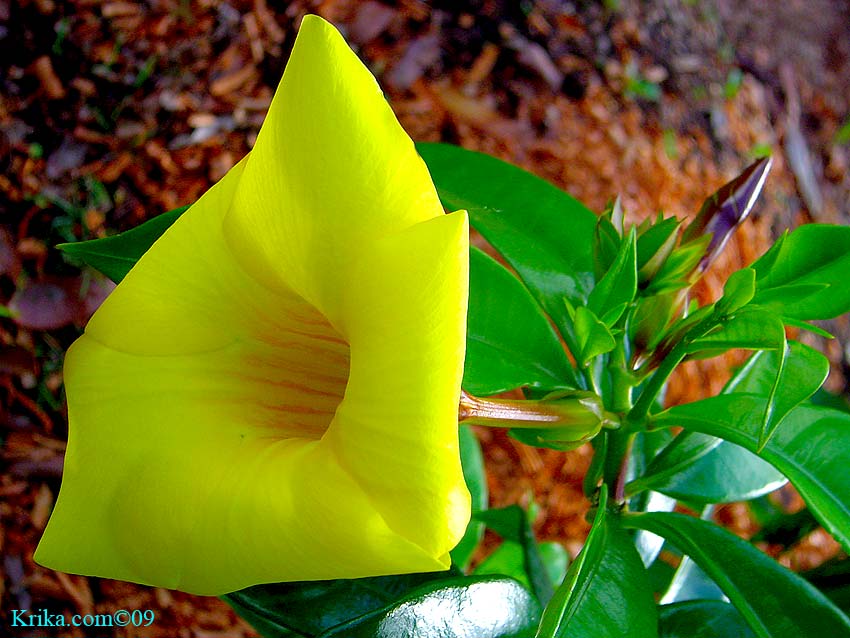 |
||||
|
||||
|
||||
| **Yellow
Allamanda Allamanda cathartica L. We knew this plant as a sprawling vine with fleshy brilliant yellow trumpet-shaped flowers the year round, though sometimes more than at others. We saw a spectacular border of a yellow allamanda in Coroico, Bolivia. The gardener must have loved the plant to do such a great job of caring for it. Then on a visit to Australia we came across the same plant, but in a much more shrub way of growth. Maybe things do evolve in Australia because it was the same plant, but very different. We found the allamanda in Tahiti to be the same, bushy rather than vine like. Benefits: As a group Allamandas have some remarkable medicinal applications in treating relatively serious diseases, including cancer. From: Tropical South America Photographed: Below on the left and right along the stone stairway by the banana garden at our former home in Montserrat and in the middle in the Jardin Botanique in Tahiti in 2013. Below those is a photograph taken at the Royal Botanical Gardens in Sydney Australia also in 2013. Planting and Care: Allamanda likes to be in the sun though it will well tolerate some shade. It seems immune to bugs and diseases (I'm knocking wood as I write this) and it is tolerant of dry periods. It will look a little worse for the wear, but will come right back with the first rain. It takes well to hard pruning which keeps its branches from growing all over the garden. Like so many tropical plants, the allamanda is toxic. Text and Photographs ©KO 2008/2010 and ©GreenGardeningCookingCuring.com 2013/2018 |
||||
|
||||
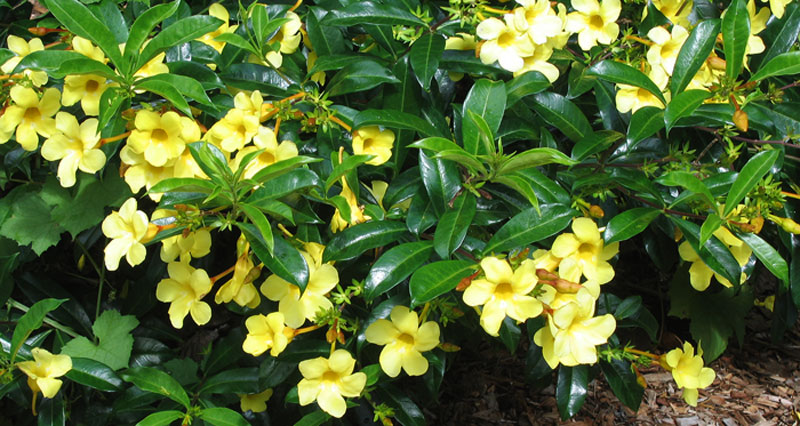 |
||||
| Allamanda
Mystery This is another of the Pacific allamandas that grows as a bush, not as a vine as I've always seen them in the Atlantic hemisphere. Either way, they are very appealing and easy to grow. Benefits: As a group Allamandas have some remarkable medicinal applications in treating relatively serious diseases, including cancer. From: Mexico to Argentina Photographed: In the Jardin Botanique in Tahiti in 2013. Planting and Care: Plant this allamanda in full sun and don't worry to much about moisture unless you are in a very dry environment. Give the plants fertilizer now and then. This is another of my favorite plants in the garden, not only for its lush flowers, but for its easy going nature. Text and Photograph ©GreenGardeningCookingCuring.com 2013/2018 |
||||
|
||||
| Almond Trees Please see the "T" Page -- Tropical Almond | ||||
|
||||
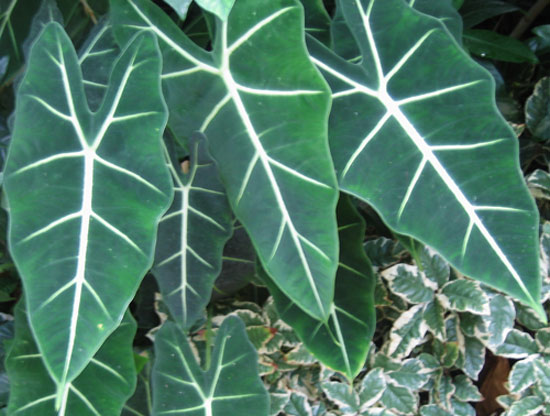 Green
Velvet Alocasia, African Mask, Elephant's Ear Alocasia
micholitziana 'Frydek' Green
Velvet Alocasia, African Mask, Elephant's Ear Alocasia
micholitziana 'Frydek'This is a large and impressive green and white shade loving perennial plant. It could well serve as a centerpiece in many garden places or even as an indoor stunner. Benefits: Apparently it is edible, but it can be toxic if not carefully prepared. From: The Philippines Photographed: In the Winter Garden in Auckland, New Zealand, in 2013. Planting and Care: Aside from loving moisture, humidity and shade, this alocasia is tolerant. Give it a range of pH soil, warmth, soil type and it will probably do just fine. It is not winter hardy. Text and Photograph ©GreenGardeningCookingCuring.com 2014/2018 With my appreciation, this plant which I had identified incorrectly
was identified by a new visitor to the site, Sharon from Denver,
Colorado, in the USA |
||||
If
you know what this plant is, please contact me and let me
know too.
|
If
you know what this plant is, please contact me and let me
know too.
|
|||
| Alternanthera ficoidea See the "J" Page JOSEPHS COAT (2) | ||||
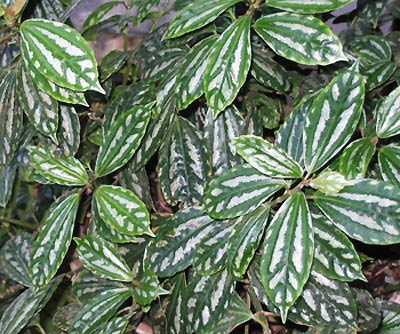 Aluminum
Plant, Watermelon Plant Pilea
cadierei Aluminum
Plant, Watermelon Plant Pilea
cadiereiThis is an attractive low growing foliage plant that does well in warm climate gardens year round. I've also seen it as a potted plant in places where there is a freezing winter. From: Vietnam Photographed: At the Hotel Atitlan on Lake Atitlan in Guatemala in 2010. Planting and Care: Bright light with no direct sun will keep this plant happy along with adequate moisture. It will do best in a consistently moist, but not wet soil. Warning: The aluminum plant is toxic to both cats and dogs. Text and Photograph ©Krika.com 20010 and ©GreenGardeningCookingCuring.com 2018 |
||||
| **Ants See The "W" Page WILDLIFE -- Insects | ||||
| Apples Benefits and Risks: Organic apple cider vinegar is a source of potassium, magnesium and calcium. It is also believed to have a cleansing effect on the body, relieving us of accumulated toxins and excess water. Non-organically grown apples should be avoided considering they have made the top ten most contaminated produce products for the last few years. From all I've read, I don't even like touching them, let alone eating one of them. Of course this means avoiding apple juice, cider, cider vinegar, apple sauce and any other form of apple not noted to be organically produced. From: Photographed: Planting and Care: Text and Photograph ©GreenGardeningCookingCuring.com 2018 |
||||
| Apricots Prunus
armeniaca Apricots live very closely to mangos in my beloved fruits hierarchy. As with most fruit, I prefer them dried or cooked. Benefits: Muscle relaxant and stress reducing apricots are rich in magnesium. From: This is disputed, but apricots were known in ancient Armenia which is the reason for its scientific name. Photographed: Planting and Care: When last we were in Naples, we encountered the sweetest and most beautiful apricots we've ever seen. Ever on the look out, I saved all of the pits which I took to be seeds. I got them home here to Guatemala and then got on the web to find out how to plant them. Here is what I found. First the pits aren't the seeds. The seeds are protected inside the pits. Right now the pitless seeds are living in my fridge until we get back from our next jaunt toward the end of November. Then I'll soak the seeds in warm water for a night and put them in a jar of dampened humusy soil, cover it and return them to the fridge. I read that after a month or so I might find sprouted seeds. I'll let you know. This was one of my seed saving ventures that just did not pan out for folks like me who are so frequently traveling. Text and Photograph ©GreenGardeningCookingCuring.com 2018 |
||||
| Aptenia cordifolia See the "S" Page -- SUN JEWEL | ||||
| **Areca Please See The Palms and Sagos Page -- Bamboo Palm | ||||
| Aristolochia braziliensis See the "D" Page -- DUTCHMANS PIPE | ||||
|
||||
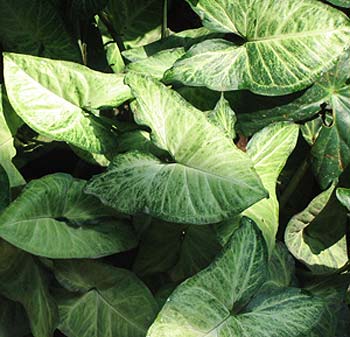 **Arrowhead
Vine Syngonium podophyllum or Syngonium
angustatum **Arrowhead
Vine Syngonium podophyllum or Syngonium
angustatumThis is a very tenacious vine with about six inch arrow shaped leaves as its name implies. It is often used as an easy to care for house plant in northern climates. In a tropical environment it can be extremely invasive so be sure to plant it where you will forever want it to be growing. Benefits: The arrowhead vine does have some health benefits, but they are not standouts. Some of the members of this family have edible roots. From: Mexico, Central and South America Photographed: At the Hotel San Buenaventura at Lake Atitlan in Guatemala. Planting and Care: This vine requires very little, but is probably happiest in a semi-shady area of the garden. Text and Photograph ©KO 2008/2010 and ©GreenGardeningCookingCuring.com 2018 |
||||
|
||||
|
||||
|
||||
This
little beauty was my very first artichoke photographed
in our front yard at Lake Atitlan in Guatemala in 2012. I'm thrilled! |
||||
|
||||
Photographed: In
the Vucciria Market in Palermo in Sicily, Italy in 2012. |
||||
Photographed: At
Ericlea Minoa in Sicily, Italy, in 2012. |
||||
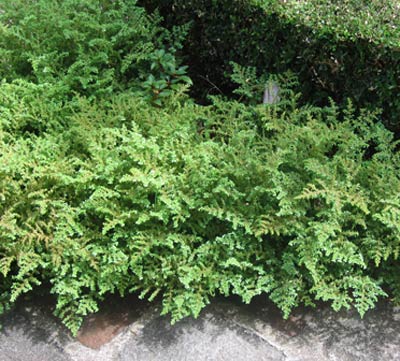 Artillery
Plant, Gunpowder Plant, Rockweed, Brilhantinax Pilea
microphylla Artillery
Plant, Gunpowder Plant, Rockweed, Brilhantinax Pilea
microphyllaThis is an unusual plant much resembling something in the fern family, but nothing is further from the truth. This is an appealing fleshy sort of annual plant. Benefits: It is said to have some health benefits, but I was unable to find any specifics. From: This plant is from Florida, Mexico, the West Indies, and tropical areas of Central and South America. Photographed: At the Hotel Atitlan Botanical Garden in Guatemala. Planting and Care: This plant is best adapted to shady situations in warm places with a good amount of rain or watering. It is low growing and makes a great background plant. Text and Photograph ©GreenGardeningCookingCuring.com 2014 My #34A Plant Mystery was solved by Glenn a visitor to my website who lives in Brisbane, Australia. Many thanks for your help. |
||||
| **Arugula,
Rocket Eruca sativa Popular and healthful, though bitter in taste, over the last decade or so arugula has become a staple in upscale salads. Benefits: Low in calories like most salad vegetables, arugula has calcium and folate, vitamins A, C and K and potassium so do add it to your salads made at home if you don't mind the bitter taste. From: The Mediterranean. Photographed: Planting and Care: Growing your own arugula is pretty easy as it is much like all the other greens you may have growing. Plant seeds early in springtime. Once the little plants begin to grow, thin them as you would other greens. Grow them in a sunny location early in the summer season, moving them to a more shady location once the hot sun arrives. Arugula also loves being well watered in an area of the garden with good drainage. Text ©GreenGardeningCookingCuring.com 2018 |
||||
ASPARAGUS FAMILY |
||||
 **Asparagus Asparagus
officinalis ‘Argenteuil’ **Asparagus Asparagus
officinalis ‘Argenteuil’Back in 2003 or 2004 we planted the Martha Washington asparagus variety and had six inch plants set out when feral (wild) chickens arrived and dug them up as they looked for bugs to eat. I was in despair, but in truth the plants had not been all I had hoped for. While traveling in Europe we had picked up a French heirloom variety of seeds called Asparagus 'Argenteuil. They didn't prove at all difficult to get started and we soon set out eight and ten inch plants in the garden. We tried to replicate a non-growing season by not watering during the dry season in mid and late spring. We hoped this might fool the plants into thinking they have endured a winter once the rains begin again in June or July. Asparagus normally like full sun, but in Montserrat we planted them in a semi-shady area. Benefits: Low in calories along with spinach and broccoli, asparagus is high in vitamin K which can neutralize anticoagulants. These vegetables promote blood clotting so if you are taking any kind of anticoagulant medications, they are probably best avoided in your diet. Aside from vitamin K, asparagus will also provide you with "vitamins A, C, E, and K, B6, and folate, iron, copper, potassium and even protein." One great benefit of asparagus is that it is said to be a great cure for the all American hangover and for other toxins in your body. Munch on some chilled cooked stalks during an evening that is likely to bring on a headache and you may feel much better in the morning. For those folks with a tendency to form cataracts, a diet rich in asparagus may reduce the problem. Check with your doctor or better yet check this out further on the web. Eating a serving or two of asparagus daily may also be a natural and delicious way to sooth they symptoms of irritable bowel syndrome. From: France Photographed: In our garden at our former home in Montserrat unless otherwise noted. Planting and Care: Seeds should be soaked overnight to enhance their chances of sprouting, but if you can buy asparagus roots, all the better. The roots are easily handled and sprout readily not too long after being set out in the garden. Plant them where they will have a long and productive life, fertilize them frequently or use a good amount of well rotted manure. I think asparagus are in the grass family so they are heavy feeders, but they do give us one of the world's most delightful vegetables. As mentioned above, asparagus normally have a dormant period during winters in temperate climates. In the tropics it is a little tricky to keep them happy, but our dry season worked. We were away from Montserrat and our gardens for over a year and when we returned there were the asparagus, now pencil thick! So, the dry season trick appears to work. If you have similar luck, please do write and tell me your asparagus tricks. Contact Us Text and Photographs ©GreenGardeningCookingCuring 2018 |
||||
|
||||
Photographed: In
the Blithewold Garden in Bristol, Rhode Island
2013. |
||||
| **Asparagus Bean See The "B" Page BEANS -- Asparagus Bean | ||||
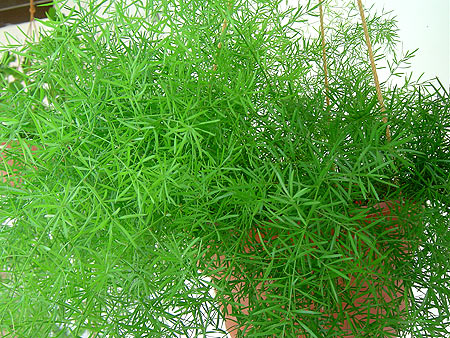 **Asparagus
Fern, Bushy Asparagus; Coarse Asparagus Fern, Myer’s Asparagus;
Regal Fern, Smilax, Sprenger Asparagus Asparagus
densiflorus cv. sprengeri **Asparagus
Fern, Bushy Asparagus; Coarse Asparagus Fern, Myer’s Asparagus;
Regal Fern, Smilax, Sprenger Asparagus Asparagus
densiflorus cv. sprengeriIn Montserrat, we had one of these plants thriving in our shady sloped garden by the pool, but it did not survive the ashy volcanic mud fall of July 2003. I had hoped that Mrs. Greer, who sold eggs in the nearby village of Salem, would give me a piece of her very large pot bound plant as we had put a free advertisement for her eggs and chickens on our htpps:www.Montserrat-Today.com website. After waiting months for that to happen, I found some small plants growing wild in one of the damper mountainous areas of the island and brought a few tiny pieces home. We moved them to our terraced shade garden before selling our home in 2011. I now have new plants living happily at our home at Lake Atitlan in Guatemala. Benefits: There have been traditional medicinal uses for the leaves and more recently studies have been done to investigate other possible curative values. From: Temperate southern Africa. Photographed: In a hanging pot on the front of our former home in Montserrat. Planting and Growth: This fern-like plant is fast growing and ultimately large, growing to be about two feet wide with fronds about thirty inches long. Though it is said to grow best in either full sun or semi shade that has not been our experience. In semi-tropical full sun ours was burned and bedraggled. Replanted in bright shade it came into its own and was beautiful before being buried in volcanic ashy mud. As delicate plants go, this one is not particularly fussy; a reasonable amount of water and fertilizer and it will dazzle you with its beauty. It also makes an excellent house plant growing in a hanging pot in a bright window. I had one in my New England apartment for years. Text and Photograph ©KO 2012 and GreenGardeningCookingCuring.com 2014/2018 |
||||
My
Fern Mystery #2 was solved with the help of a visitor to the
site, Sharon, from Denver, Colorado
|
||||
| **Asters Callistephus
chinensis If you love color and have a bit of space with good sun, I can't think of a better flower than asters. As you can see on the left and below, just looking at the photographs makes you think of Mexico! Asters would also be an especially good choice for a child's first garden. Benefits: I'm not sure yet if asters are medicinally beneficial, but psychologically they'll give even the saddest folks a lift. From: China and Korea Photographed: Below on the left in Thuya Garden on Mt. Desert Island in Maine and on the right in in Oaxaca, Mexico. Planting and Care: If you are short of time, simply pick up a flat of young plants at your local nursery. If you have a little more luxury of time, plant the seeds following directions on the package. When they are about 3" tall, move them out into the garden and keep them moist until they "take." Give them your own good composted soil or resort to a commercial liquid fertilizer to get them off to a good start. Sit back and enjoy the show! Text and Photographs ©KO 2009 and ©GreenGardeningCookingCuring.com 2018 |
||||
|
||||
| **Asystasia gangetica See the "S" Page -- SPIDER LILY | ||||
| **Australian Pine See the "C" Page -- CASUARINA TREE | ||||
| **Autumn
Crocus, Naked Ladies, Meadow Saffron Colchicum autumnale I'm not sure I can think of anything better in the fall garden than autumn crocus. Unlike most fall blooms they have the colors of spring reminding me that though winter is coming, spring will shortly follow. In springtime the autumn crocus sends up only foliage which reminded me of lily of the valley leaves. When I first saw them I had no idea what would appear in the fall when only flowers emerge. Benefits: Long known to be poisonous, the autumn crocus was also known to have beneficial medicinal characteristics. From: Europe, North Africa and Asia Photographed: At the Blithewold Mansion, Gardens and Arboretum in Bristol, RI, in the USA in 2014. Planting and Care: Purchase and plant autumn crocus corms in early fall at a depth of 4" in good soil. Plant them in a protected area as strong winds and such will tear up the blossoms very easily. The funny thing about this plant is that in spring it sends up a few 12 leaves which die back for the summer. In the fall its flowers will appear with no foliage at all. Note: Autumn crocus are poisonous Text and Photographs ©GreenGardeningCookingCuring.com 2014/2018 |
||||
|
||||
|
||||
|
||||
| Azaleas Rhododendron
spp. Their great beauty belies a very confusing connection with Rhododendrons. Azaleas in New England are too often grown as part of the traditional plants used to hide home foundations so they are almost always trimmed to some sort of shape appealing to the homeowner losing much of their appeal. From: Asia, Europe and North America Photographed: In the garden of our apartment in Oaxaca, Mexico (below left), at the Hotel Riviera on Lake Atitlan in Guatemala (below right) and in the Botanical Garden at the Hotel Atitlan on Lake Atitlan in Guatemala all others except as noted. Planting and Care: Plant in slightly acidic soil rich in humus. Azaleas like to be well mulched to even out moisture content in the soil. Do not let these plants suffer from drought. Text & Photographs © KO 2010 and ©GreenGardeningCookingCuring.com 2018 |
||||
|
||||
|
||||
|
||||
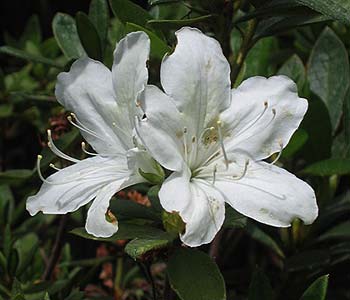 |
||||
|
||||
|
||||
|
||||
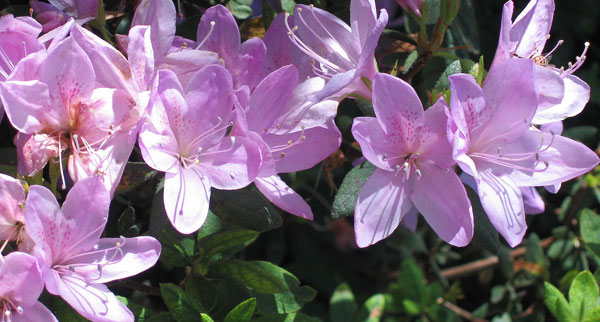 |
||||
|
||||
|
